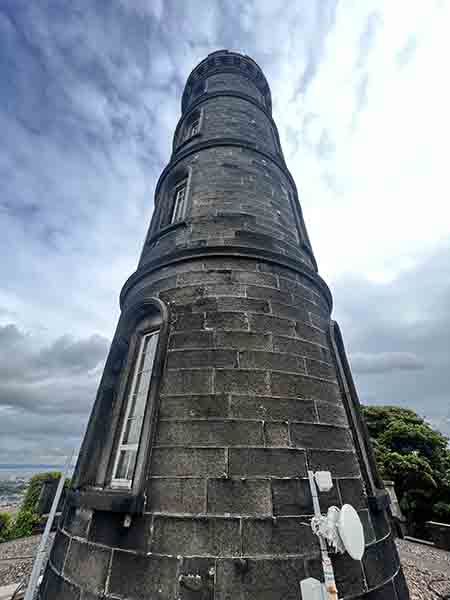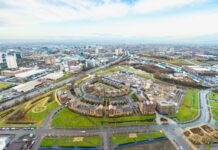
RESTORATION work is set to start on the 32 metre-high Nelson Monument, which has graced the Edinburgh skyline for more than two centuries.
The monument has been closed to visitors but is undergoing works including the restoration of the historic time ball.
Designed by Robert Burn to resemble an upside down telescope, the Nelson Monument was completed in 1815 to commemorate Vice Admiral Horatio Nelson’s death and the British victory over the French and Spanish naval fleets at the Battle of Trafalgar.
A time ball was added in the 1850s to help sailors in the Firth of Forth keep time and navigate accurately. Once synchronised with Edinburgh Castle’s one o’clock gun, the time ball has since fallen into disrepair and is currently out of service.
Managed by Museums and Galleries Edinburgh, it is hoped the Nelson Monument will reopen later this year following structural fabric assessments and rehabilitation works.
Leading the works, Stuart Fleming, director at civil and structural engineering firm Will Rudd Edinburgh, said, “As a structural engineer, with great interest in historic buildings who has seen this monument as part of the historic skyline of Edinburgh since I was a boy, it is incredibly exciting to be able to work on its restoration. Time balls are largely obsolete in modern day naval navigation, but with only a handful remaining in the UK and across the world, it is so important that we preserve them where we can, and keep this one in working order.
“We have worked closely in-house with our own expert conservation engineers, led by our Glasgow office managing director and conservation accredited engineer, MJ O’Shaughnessy to ensure the engineering sensitivities of this Monument are treated appropriately.”
MJ O’Shaugnessy added, “From a conservation engineering perspective, the primary objective was to ensure that any interventions to the building’s fabric were both appropriate and feasible, given the monument’s historical significance and its prominence in a heavily trafficked public space.
“The restoration of the time ball, in particular, requires delicate and expert craftsmanship, to be carried out in a safe, controlled workshop environment. The repairs will focus on preserving the spirit of the original time ball by using matching materials and techniques where possible, while placing a renewed emphasis on durability. This approach ensures the fabric is protected and can continue to be appreciated for many years to come, ultimately safeguarding the legacy of this historically important building.”







